I have carpal tunnel syndrome, left wrist. That’s why the fingers go dead while I sleep, waking to heavy absent fingers and the need to turn my wrist in a particular way to restore their life. Dead fingers. They don’t feel dead, only from the outside, but heavy, so heavy, and so needy. The right is going too; I know that although the doctor does not. An operation to slit the ligament in my wrist will free the nerve and restore my hand and its ‘wasting muscle’. Such violence. And my wrist! The delicate, slim wrists that I like so much, even though the fingers are plump sausages afterwards. The pain from using my left hand travels up my arm into my neck and reflects back down into my shoulders. I have to stop typing with two hands, the duet of meaning making on the keyboard. I am rendered lame in my typing.
I try the voice recognition software. Place my left hand on my knee out of the way and speak into the microphone. I have to add punctuation full stop Now I am lame in the flow of talk. Sometimes what I say appears on screen looking completely different from when it left my head; sometimes it's funny, but actually disabling. I miss the physical contact, hands on keyboard, turning ideas into words physically. I lose the constructing and reconstructing of words, of phrases and words within phrases, of sentences and phrases within sentences and paragraphs. I wonder if I will still meet my idea coming back to me formulated in the words as I reach the end of paragraphs, summarised and made clear in a way that was impossible when I started the paragraph, and requiring to be shifted (our) (art from) up front so that the reader (in bed if it) can benefit immediately from the enhanced clarity and does not need to repeat my fumbling steps (to water it) towards it. The labour of reconstructing text is part of the process, of finding what it is that I will say in my writing.
My Manchester meeting is cancelled so I can attend the art class this week. I feel at ease now. I take the Elizabeth Blackadder book to show. The teacher has brought Georgia O’Keefe – the sadness of those paintings! Today I notice her drawings or paintings of streets – a tiny curved lamppost, alight, between two huge blocks of skyscrapers. It does not ‘nestle’ between – it is like the violet that pushes itself up between paving stones in the town centre, that the teacher mentions in passing. It may not belong or fit into the aims of the huge and noisy context where it finds itself but it cannot stop itself growing. To personify it with ‘push’ is inaccurate – there is no will there, no agency acting wilfully in spite of other forces, just growth, just nature growing.
Today we were to be wild and free – how wonderful that would be. I have A3 not A4 today, bigger is wilder.
Each flower has its own line – the tulip petal echoes the tulip leaf – the shape of its line is in its DNA. I start with a daffodil, using chunky water colour pencils, really chunky – it does not please me much, the colours lie on top of each other uncomfortably, the blue and orange are blue and orange, not daffodil.
One of the women has some dying anemones, “from Mother’s Day”. The petals have twisted themselves into wonderful shapes, drying slowly like arthritic fingers. Now the colours work together, and the shapes repeat and echo and resonate: petal, leaf, stem, each curling and twisting in a similar way. The line comes from the shared chemical constituents – they curl into similar shapes as they dry out in similar ways – I made this logic up but realise that they may have the same line for many overlapping reasons: chemical, physical, biological; it doesn’t have to be DNA. They share so much.
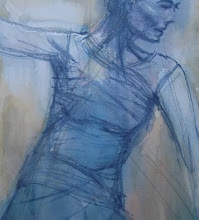

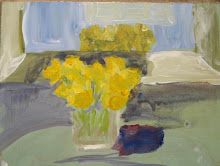

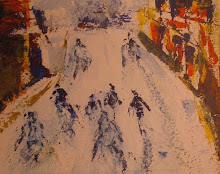
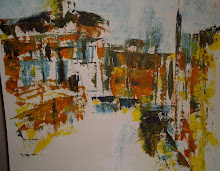
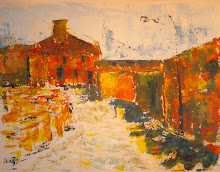






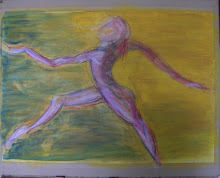
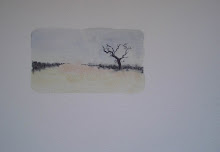
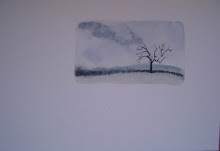





No comments:
Post a Comment